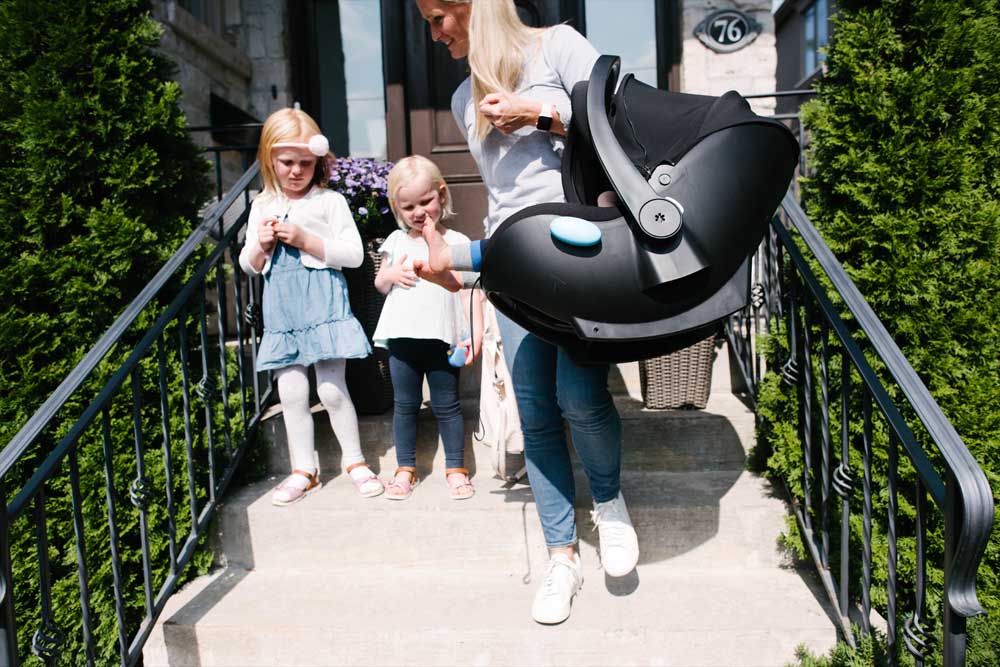Fit is a word that will come up time and time again when it comes to car seats, but what does that mean exactly?
There are of course the obvious connotations -- like how your child fits in the seat, and the fit of the seat in your vehicle -- but there are definitely a few other things to consider when choosing the right seat for you and your family. The truth is that it can mean a variety of things and it’s largely about the context in which it’s used.
So, before you get overwhelmed when hunting for the right seat for your little ones, let’s cover every important “fit” one by one to help you make the most informed decision.
1: Your child should fit the car seat well
This is probably the first one that comes to mind, and for a good reason. Kids come in different shapes and sizes, so it’s important to choose a seat that fits your child well.
You’ll of course first want to ensure that your little one is within the height and weight requirements of the car seat. You can then place them in the car seat, and make sure the harness (if included) fits and will continue to fit your child properly for as long as you need. It’s also worth checking to see how much growing room they’ll have in the seat.
For example, the larger the space between the top of their shoulders and the highest set of harness slots of a convertible or infant seat, the longer your little will to be able to use that particular car seat. Some car seats may have adjustable headrests that cover some of the harness slots, so make sure to really inspect the seat and ask questions to ensure you’re fully aware of what the seat offers!
Visiting a local retailer or technician, if possible, can be definitely beneficial as staff is often available to assist in adjusting the car seat to fit your child so that you can buckle them in properly and best assess their fit and comfort.

2: The car seat should fit your vehicle well
Clearly, the car seat isn’t going to be able to do its job if it can’t fit in your back seat. To give your child the best possible protection, it’s integral that their car seat fits properly and installs well in your vehicle.
Vehicle seat shape, bolsters and contours, headrest design and adjustability, LATCH anchor and belt buckle placement; all of these things can and will change how a car seat fits in your vehicle. And since vehicle interiors can vary fairly wildly from model to model, it’s important to install the seat the way it will be used for your little one when testing the fit. Measurements can only take you so far and won’t factor in many of the things listed above!
Just placing the car seat in your vehicle might give you a rough idea of the fit, but there will be a noticeably difference once the seat is installed, as it’s not uncommon for the position of the seat to shift once secure. Great time to remind you that a safely installed seat should have less than 1 inch of movement side-to-side and front-to-back when checked at the belt path!
Again, some stores may also have staff trained to assist with a test installation. Otherwise, if you must go the DIY route, there hopefully should be installation diagrams on the car seat’s labels themselves if an instruction manual is unavailable.

3: The driver (and front passenger) should fit the vehicle safely and comfortably with the car seat installed
When considering a car seat, one often overlooked detail is how to safely fit the rest of your passengers in the car. That’s especially true for the driver or front seat passengers when a rear-facing seat is installed behind them.
Once you’ve securely and properly installed the car seat in your vehicle, simply make sure that there is a safe distance of at least 10 inches (the average length of an adult’s forearm) between the front airbag and the driver or passenger.
Did you also know that sitting more upright is safer for a front passenger? That’s because it will often allow you to position the front seat further back, leaving more space for your legs and maintain a safer distance away from the airbag.
Keep in mind that different car seats take up a different amount of front-to-back space in the car, so an inch or two can be the difference between knees in the dash and riding in comfort!
Foonf or Fllo, for example, take up a maximum of 33 inches when rear-facing and do allow for touching the back of your front vehicle seats, provided the car seat is not being pushed or braced in any way. This means that if you were to move the front vehicle seat forward, the car seat's position and installation should not be affected.

4: The car seat should fit your budget
Being a parent means always wanting the best for your children, but what if the best just isn’t in your budget right now? No one likes to put a price tag on the safety of our kids, but it’s sadly a reality many parents face every day.
First, remember that ALL car seats must meet the same requirements in order to be sold on the market. While more expensive car seats may integrate additional safety and ease-of-use features, that doesn’t mean that a less expensive car seat is unsafe. If looking at more affordable options, just be sure to do your research to ensure you know what the car seat does and doesn’t offer so you’re not stuck with something you’re unhappy with, as car seats are almost always final sale!
What about a used seat? The truth is second-hand seats are something that most car seat experts will tell you to avoid. With used or returned seats—or even demo models—it’s unfortunately impossible to know if it has been involved in a crash or been mishandled in some way. There may be some hope if it’s coming from a trusted source (like friends or family), but it’s best not to venture down that route unless you really have no other options.
If you truly have your heart said on the best and brightest, keep an eye on manufacturer and retailer social media, sign up for newsletters, check clearance sections, and again, do your research! Most do offer helpful promotions, sales, and other discounts from time to time, so that extra bit of savings could mean the difference between affordable and unattainable.

5: The car seat should fit your lifestyle
Last but not least, since it’s something you’ll have to deal with frequently, it’s important to think about how you’ll be using the car seat in the day-to-day. The ideal seat for you and your family should be one you’re comfortable using and that comfortably fits into your life, wherever the road takes you.
For example, would you benefit more from a heavier seat that will always stay installed in your vehicle or something a little more travel-friendly? Would you rather start with an infant carrier for the convenience and portability or go straight to an appropriate convertible seat (with any needed insert like the Infant-thingy!) to save yourself another car seat investment? Or maybe you don’t even own a car but are looking something dependable and easily installed for the times you do use rideshares, taxis, or other transportation? Don’t forget to also consider the now more-than-ever complicated drop-off procedures for any school-age kids!
By really taking the time to consider what works best in your life, the answers to every little question will continue to add up and help point you towards the right seat for you and your little rider.
Whichever choice you make, simply make sure you’re as best informed as possible about the seat you’re purchasing and all the various ways it may or may not fit you and your family’s needs. Remember, in the end, the most important thing is that your children can ride in comfort, style, and safety every single time.




